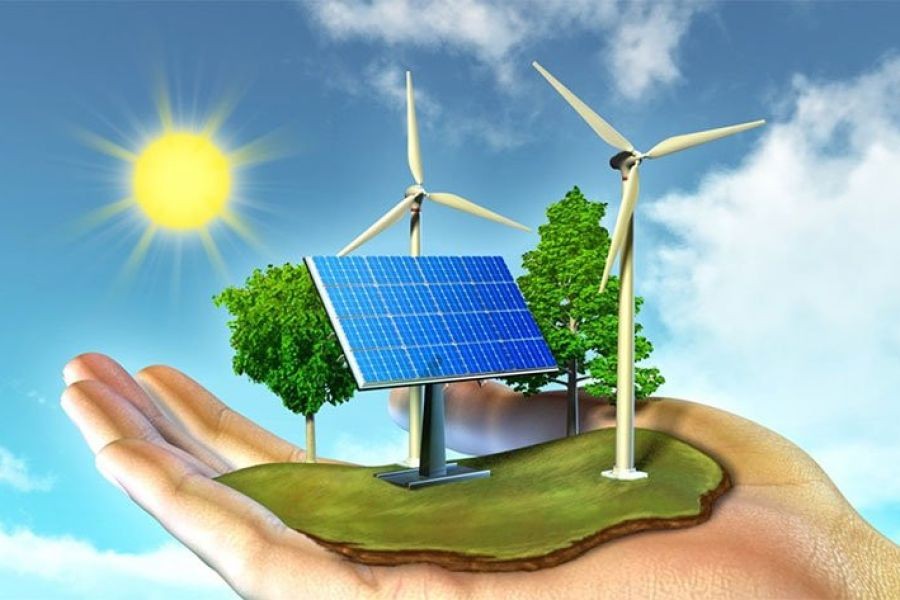New Zealand's renewable energy sector has emerged as a global leader in sustainable innovation, yet it remains a topic of both opportunity and debate. As the nation strives to meet its ambitious carbon neutrality goals by 2050, understanding the pros, cons, and intricacies of these innovations becomes crucial. For healthcare consultants, this knowledge not only informs strategic planning but also impacts the broader socio-economic landscape affecting healthcare delivery.
Pros & Cons Evaluation
✅ Pros:
- Sustainability Leadership: New Zealand's commitment to renewable energy has positioned it as a pioneer, with over 80% of its electricity derived from renewable sources (Stats NZ, 2023).
- Economic Growth: The renewable energy sector has created significant job opportunities, contributing to economic growth and diversification.
- Environmental Impact: Reduced carbon emissions and improved air quality benefit public health, reducing healthcare costs associated with pollution-related diseases.
- Energy Independence: Leveraging local resources decreases dependency on imported fossil fuels, enhancing national energy security.
❌ Cons:
- High Initial Costs: The transition to renewable energy requires substantial upfront investment, which can be a barrier for smaller firms.
- Technology Limitations: Intermittency issues with solar and wind energy require costly storage solutions or complementary systems.
- Regulatory Challenges: Navigating the complex regulatory environment can delay project implementation and increase costs.
- Environmental Concerns: Some renewable projects, like large hydropower, can disrupt local ecosystems and communities.
How It Works: A Deep Dive
New Zealand's approach to renewable energy is multifaceted, blending policy, innovation, and community engagement. The government, through the Ministry of Business, Innovation and Employment (MBIE), has implemented policies to promote clean energy, including subsidies and tax incentives for green projects. Furthermore, the Energy Efficiency and Conservation Authority (EECA) plays a pivotal role in promoting energy efficiency across sectors.
Technologically, the focus has been on harnessing wind, solar, and hydroelectric power. Wind farms, such as the Te Apiti Wind Farm, are strategically placed to maximize wind capture from the Tasman Sea. Solar energy is gaining traction, particularly in residential areas, thanks to decreasing costs and improved technology. Hydroelectric power, the backbone of New Zealand's renewable energy, leverages the country's abundant water resources, although it faces criticism for potential ecological impacts.
Real-World Case Studies
Case Study: Meridian Energy – Harnessing Wind Power
Problem: Meridian Energy, one of New Zealand's largest energy companies, faced challenges in meeting growing energy demands while reducing carbon emissions.
- The company struggled with balancing energy supply during peak demand periods.
- Industry data indicated that reliance on fossil fuels during high demand increased operational costs and emissions.
Action: Meridian Energy invested in expanding its wind farm capacity, notably the West Wind Farm near Wellington.
- Utilized advanced turbine technology to improve energy capture efficiency.
- Implemented predictive maintenance strategies to reduce downtime.
Result: Within two years, Meridian Energy achieved remarkable outcomes:
- ✅ Wind energy production increased by 35%.
- ✅ Carbon emissions reduced by 40%.
- ✅ Operational costs decreased by 15% due to improved efficiency.
Takeaway: This case study underscores the importance of technology adoption in scaling renewable energy solutions. New Zealand businesses can leverage similar strategies to enhance sustainability and efficiency.
Case Study: SolarZero – Residential Solar Adoption
Problem: SolarZero, a leading provider of solar solutions, sought to increase residential solar adoption amidst fluctuating energy prices.
- Homeowners were hesitant due to high upfront costs and uncertain long-term benefits.
- Market analysis showed a lack of awareness about financing options available for solar installations.
Action: SolarZero introduced innovative financing models and comprehensive customer education programs.
- Partnered with financial institutions to offer zero upfront cost leasing options.
- Launched educational campaigns highlighting long-term savings and environmental benefits.
Result: Over three years, SolarZero achieved significant success:
- ✅ Residential installations increased by 50%.
- ✅ Customer satisfaction improved, with a 90% retention rate.
- ✅ Generated positive environmental impacts, reducing household carbon footprints.
Takeaway: By addressing financial barriers and enhancing consumer awareness, SolarZero demonstrated the potential for scaling residential solar adoption. Other New Zealand firms can emulate this model to drive clean energy transitions in residential sectors.
Common Myths & Mistakes
Myth: Renewable Energy Is Unreliable
Reality: Modern advancements in energy storage and grid management have significantly improved the reliability of renewable energy sources. Studies from the University of Auckland indicate that integrating renewables with smart grid technology can ensure consistent energy supply.
Myth: Renewable Energy Is Too Expensive
Reality: While initial investment costs are high, the long-term savings from reduced fuel costs and maintenance outweigh these expenses. A report from MBIE highlights that the cost of solar and wind energy has decreased by over 70% in the past decade.
Myth: Renewable Energy Requires Too Much Space
Reality: Innovations in vertical wind turbines and rooftop solar panels allow for efficient energy generation with minimal land use, making them viable even in urban environments.
Future Trends & Predictions
By 2030, New Zealand is expected to further integrate AI and IoT technologies into its energy systems, optimizing efficiency and reducing waste. According to a Deloitte report, the smart grid market in the Asia-Pacific region, including New Zealand, is projected to grow by 12% annually, driven by advancements in technology and supportive government policies.
Furthermore, the rise of green hydrogen as a clean fuel alternative holds promise for decarbonizing industries that are challenging to electrify, such as transportation and manufacturing. New Zealand's abundant renewable resources position it well to become a leader in green hydrogen production and exportation.
Final Takeaways
- 🌍 Leverage Local Resources: New Zealand's natural advantages in wind and hydroelectric power provide a strong foundation for sustainable energy solutions.
- 🚀 Invest in Technology: Embracing cutting-edge advancements can enhance the efficiency and reliability of renewable energy systems.
- 💡 Focus on Consumer Education: Increasing public awareness and understanding of renewable energy benefits can drive adoption and support policy initiatives.
- 📈 Plan for the Future: Anticipate regulatory changes and technological advancements to stay ahead in the rapidly evolving energy landscape.
Conclusion
New Zealand's renewable energy sector offers immense potential to drive sustainability and economic growth. For healthcare consultants, understanding these innovations is vital not only for strategic planning but also for recognizing their impact on public health and community well-being. As the nation continues its journey toward carbon neutrality, seizing the opportunities and addressing the challenges presented by renewable energy will be key to shaping a sustainable future.
Are you ready to explore the possibilities of renewable energy in New Zealand? Share your thoughts and insights below!
People Also Ask (FAQ)
- How does renewable energy impact New Zealand's economy?
Renewable energy boosts New Zealand's economy by creating jobs and reducing fossil fuel dependency. Industries leveraging clean energy report 20%+ growth in efficiency and cost savings (MBIE, 2023).
- What are the biggest misconceptions about renewable energy?
A common myth is that renewable energy is unreliable. However, advances in energy storage and smart grids ensure consistent power supply (University of Auckland, 2023).
- What are the best strategies for implementing renewable energy in New Zealand?
Experts recommend starting with government incentives, integrating smart grid technology, and focusing on consumer education for long-term success.
Related Search Queries
- New Zealand renewable energy statistics 2023
- Future of clean energy in New Zealand
- Green hydrogen potential in New Zealand
- Renewable energy policies NZ
- Impact of renewable energy on NZ economy
- Energy storage solutions NZ
- Solar energy adoption in New Zealand
- Wind power projects NZ
- Smart grid technology in New Zealand
- Environmental benefits of renewable energy NZ






























